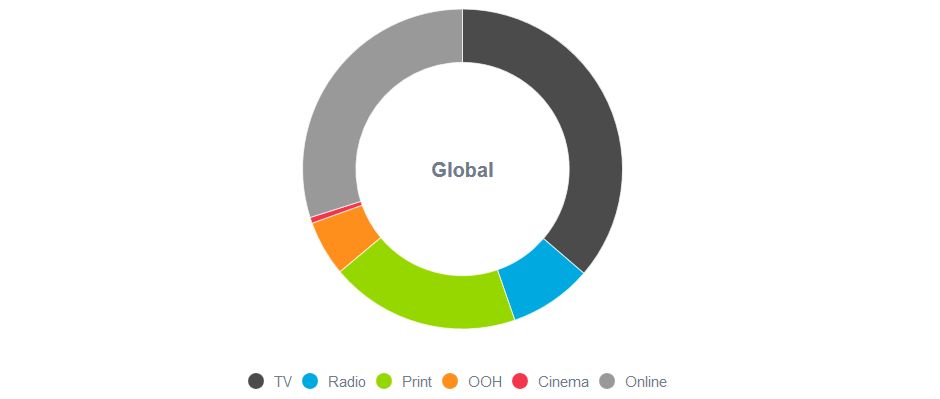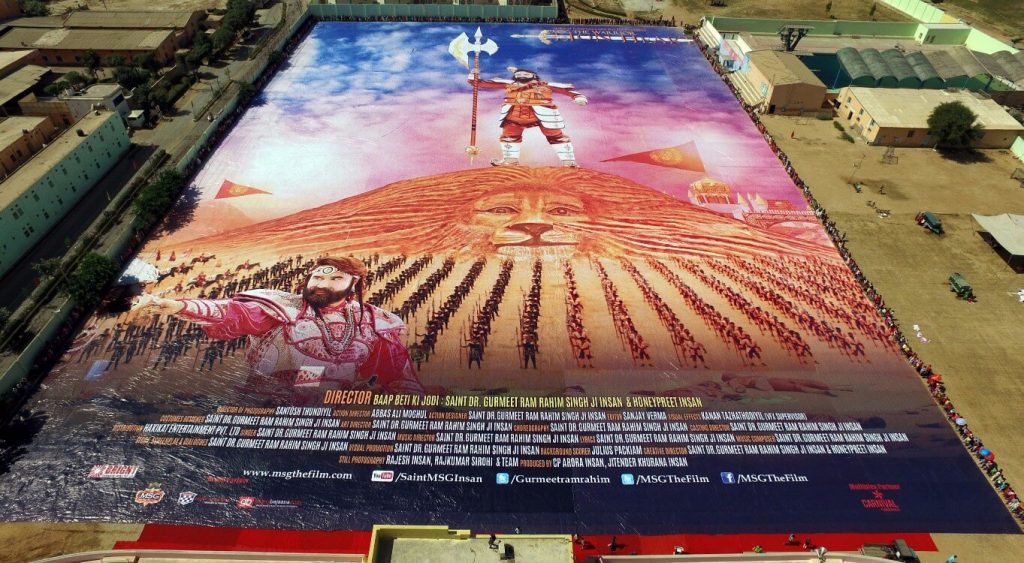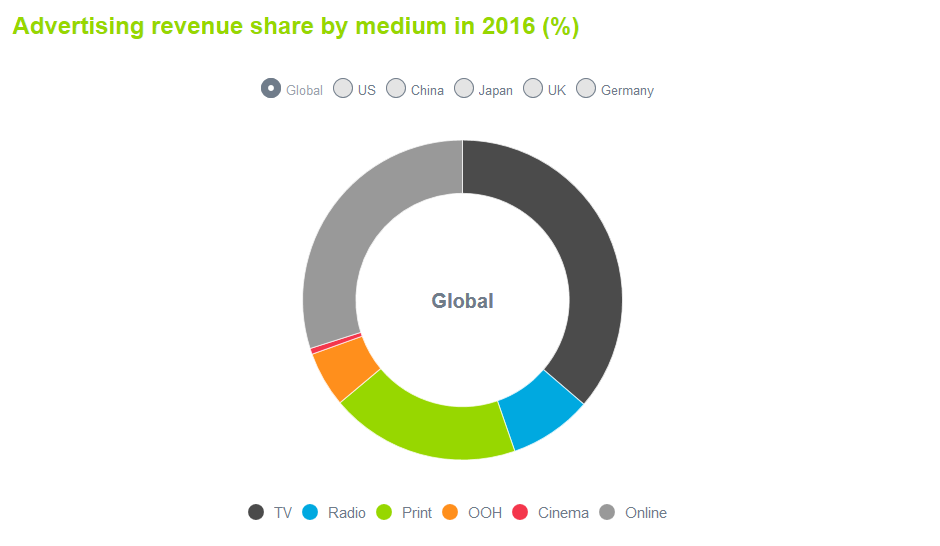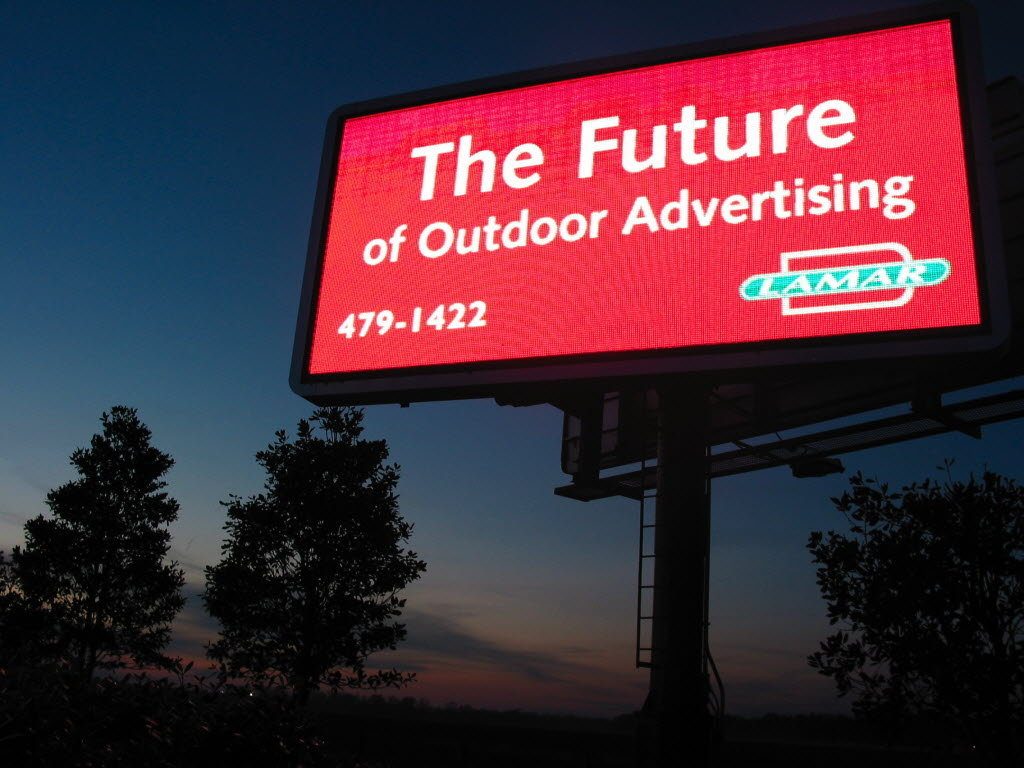
Print and advertising
Since the first stenciled handprint was sprayed in ochre onto a cave wall to mark a tribal territory; printed visual messages have served to advertise everything from warnings to toothpaste.
Wartime Londoners were beseeched to ‘Keep Calm and Carry On’ with posters all over the capital. Glossy magazines have long lured buyers of luxury goods with slick, highly retouched images of glamour, success and sparkle. Newspapers, in the past, have served as a medium for people to advertise their unwanted belongings in the classified pages. Our letterboxes are still filled with catalogues for sales, special offers and services and giant billboards line highways and railway stations. Brochures and sample books are still of major benefit to the marketing of all manner of goods and services.
A little trivia from the Guinness Book of Records: The world’s largest poster was produced in 2016 by India’s Hakakit Entertainment to promote a new movie. It measures over 15,000 square metres.

Changing face of advertising
Things are changing; new social media and cheaper screen-based advertising are eating into the entire advertising market, TV, outdoor, radio and print. According to leading research company IHS Markit, at the end of 2016, the world advertising market stood at USD$ 532 billion, forecast to grow to $590 billion by end of 2017.
Television still holds the major market share of global advertising, at around USD$192 billion, driven by major events such as the Superbowl, Olympics, Football championships and racing. Online advertising has overtaken print and is now second at around USD$160 billion but is predicted to overtake TV by 2020, says HIS Markit’s principal analyst Eleni Marouli. Print is still huge at USD$101 billion. Out of Home advertising, which contains a substantial proportion of printed posters, billboards and point-of-purchase; adds around 25 billion to print’s newspaper and magazine advertising share. Direct mail would add further to the total.

However, when all print is considered – packaging, informational, entertainment (books), transactional as well as advertising; it is still the world’s biggest media at around USD$980 billion by 2018.
As an advertising medium, print has some unique advantages over electronic means.
Print is:
• Tactile
• Permanent or recyclable
• Does not change on the page as screens do
• Focused
• More personal, can be ‘owned’ and trusted
• Is designed to a high level for maximum appeal
• Once printed, does not consume resources, electricity etc.
There are undoubtedly changes happening. With outdoor billboards, many prominently-positioned sites have converted to LED screens where ‘posters’ are uploaded remotely for new campaigns. The convenience of this over manually erecting giant new billboard ‘skins’ is obvious, but there are disadvantages too.

Electronic billboards mostly feature multiple advertising messages, thereby diluting the ‘hit rate’ of advertisers when their message is not being displayed. This increases revenue for the site owner, but decreases effectiveness for the advertiser. A static billboard is always ‘on message’ 24/7. Electronic billboards are also very expensive to set up initially, over $1 million, and continue to consume high amounts of power. Lighting for static billboards is increasingly solar-powered and only needed at night.
Of hits and bits
Online marketing campaigns are proving very successful for attracting ‘likes’ and ‘hits’ but advertisers are becoming increasingly aware that this does not always translate into increased business. It seems that the ‘social’ side of ‘social media’ objects to commercial intrusion and ad-blocking apps are being installed like wildfire.
Where online seems to benefit is by a hybrid use of print and online, where targeted print advertising and direct mail is used in conjunction with e-commerce; driving traffic to websites where transactions can take place.
Almost everything printed can serve as a kind of advertisement for your products or services. Business cards are a perfect example; the reverse side can contain promotional messages or even pictures. Invoices and letterheads can feature messages extolling the superiority and experience of the business. Labels and packaging can be designed so as to cross-sell to other products in the range and so on.
The possibilities in print advertising and marketing are increasing as digital technologies invade printing, just as they have done in every other walk of life. Spot varnishes, die-cuts, exotic paper stocks, metallic foils, new inks that fluoresce and even 3D lenticular printing have all added to the versatility of print. In magazine and brochure advertising, the incorporation of QR codes can take the reader directly into the online world and your website URL with one click.
Wrapping it up
Even your vehicle can be used as a mobile advertising hoarding with an all-over digitally-printed ‘wrap’ of vibrant graphics. Some enterprising types even carry a brochure holder with them that locks onto a window when parked and contains a few brochures of their services for passing pedestrians.

Yes, the advertising world is changing but, like TV, print is not about to disappear. There may soon be a new ‘king’ of global advertising in online but, there will still be a number of large principalities that prosper and offer stand-out awareness in an otherwise overcrowded market.
And you never get ‘server down, can not connect’ with print!

